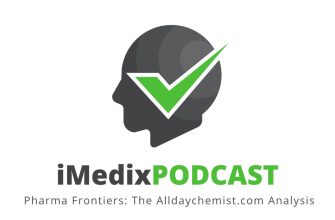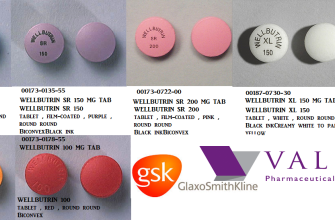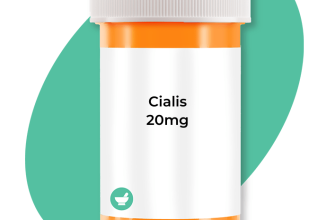No, Maxalt (rizatriptan) is not an opiate. It belongs to a class of drugs called triptans, which are selective serotonin receptor agonists. These drugs work differently than opiates, targeting specific receptors in the brain and blood vessels to relieve migraine pain.
Opiates, on the other hand, bind to opioid receptors, affecting pain perception and inducing a range of other effects, including potential for dependence and respiratory depression. Maxalt lacks these opioid-related properties. It primarily focuses on reducing the severity of migraine headaches, with a significantly lower risk of side effects associated with opioid analgesics.
Understanding this crucial distinction is vital for appropriate medication choices. Always consult your doctor or pharmacist for personalized advice regarding migraine treatment. They can help you find the best and safest option based on your individual medical history and needs. Self-treating migraines can be risky, so professional guidance is strongly recommended.
- Is Maxalt an Opiate?
- Maxalt’s Chemical Composition and Mechanism of Action
- Understanding Rizatriptan’s Action
- Further Details on the Mechanism
- Pharmacokinetic Properties
- Important Considerations
- Comparing Triptans and Opiates: Key Differences
- Mechanism of Action
- Side Effects and Addiction Potential
- Appropriate Use
- Long-Term Effects
- Potential for Misconceptions and Misuse
Is Maxalt an Opiate?
No, Maxalt (rizatriptan) is not an opiate. It belongs to a class of drugs called triptans, which are used to treat migraine headaches.
Opiates, on the other hand, are derived from the opium poppy and include drugs like morphine, codeine, and heroin. They act on opioid receptors in the brain, producing pain relief and potentially causing dependence.
Triptans, like Maxalt, work differently. They affect serotonin receptors, which play a role in migraine pain. This mechanism of action explains why Maxalt is effective for migraine but doesn’t provide the same pain relief or carry the same risk of addiction as opiates.
If you have questions about Maxalt or other migraine treatments, consult your doctor or pharmacist. They can provide personalized advice based on your specific needs and medical history. Always follow your doctor’s instructions regarding medication use.
Maxalt’s Chemical Composition and Mechanism of Action
Maxalt contains rizatriptan benzoate, a selective 5-HT1B/1D receptor agonist. This means it primarily targets specific serotonin receptors in the brain.
Understanding Rizatriptan’s Action
Rizatriptan’s interaction with these receptors constricts blood vessels in the brain, reducing the inflammation and pain associated with migraine attacks. This vasoconstriction is believed to be a key component of Maxalt’s efficacy.
Further Details on the Mechanism
- The exact mechanism isn’t fully understood, but it involves influencing the release of neuropeptides like calcitonin gene-related peptide (CGRP), which play a role in migraine pain transmission.
- Research suggests rizatriptan may also reduce the sensitivity of pain pathways, further alleviating migraine symptoms.
- Its relatively selective action on 5-HT1B/1D receptors minimizes effects on other serotonin receptors, potentially reducing side effects compared to some other migraine treatments.
Pharmacokinetic Properties
Rizatriptan is quickly absorbed after oral administration, reaching peak plasma concentrations within approximately 1-1.5 hours. It’s primarily metabolized in the liver and excreted in the urine. Its half-life is relatively short, generally around 2-3 hours.
Important Considerations
- Maxalt is a specific treatment for migraine attacks, not a preventative medication.
- Consult a doctor before using Maxalt, especially if you have underlying heart conditions, uncontrolled hypertension, or other health concerns.
- Always follow prescribed dosage instructions.
Comparing Triptans and Opiates: Key Differences
Maxalt, a triptan, acts differently than opiates. Triptans target serotonin receptors in the brain, constricting blood vessels and reducing inflammation associated with migraine. Opiates, conversely, work on opioid receptors, primarily affecting pain perception by reducing the brain’s response to pain signals.
Mechanism of Action
Triptans like Maxalt directly influence the migraine process itself. They don’t simply mask the pain; they aim to reduce the underlying cause. Opiates, such as morphine or codeine, offer pain relief by altering pain perception. They don’t address the root of the migraine.
Side Effects and Addiction Potential
Triptans have side effects like nausea, dizziness, and tingling, but their addiction potential is very low. Opiates, however, carry a significant risk of addiction and dependence, along with more severe side effects, including constipation, respiratory depression, and tolerance.
Appropriate Use
Doctors prescribe triptans specifically for migraine treatment. Opiates are used for more severe pain management and are rarely the first choice for migraines due to their side effect profile and addiction potential. Regular opiate use for migraines is not advised.
Long-Term Effects
Long-term triptan use generally poses lower risks compared to prolonged opiate use. Chronic opiate use can lead to serious health problems, including physical dependence and withdrawal symptoms.
Potential for Misconceptions and Misuse
Maxalt, while not an opiate, can be misused. Its effectiveness in treating migraine pain might lead some to believe it’s a stronger pain reliever than it is, prompting overuse or seeking higher doses than prescribed.
Patients should avoid exceeding the recommended dosage. Regularly exceeding prescribed doses increases the risk of side effects, such as nausea, dizziness, and drowsiness. Always consult a doctor before adjusting your medication.
Another potential issue is the development of medication overuse headache (MOH). This condition can arise from frequent use of any pain medication, including Maxalt. Recognizing symptoms like daily headaches and the need for increasing doses are key to prevention. Your doctor can help you create a plan to reduce dependence.
Finally, sharing Maxalt with others is dangerous. It’s crucial to remember that medications are prescribed for specific individuals based on their medical history and other factors. Incorrect use can cause harm.








